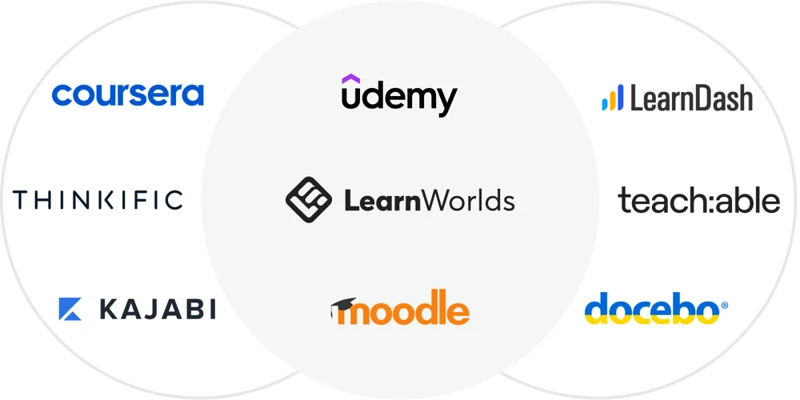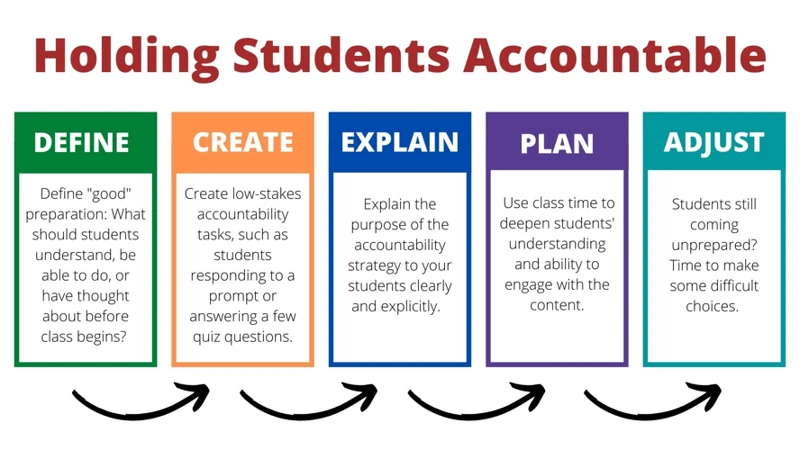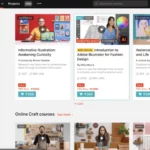With the digitization of various aspects of our lives, it’s no surprise that even libraries are being modernized. The rise of online education and remote learning has made accessing a vast wealth of knowledge resources through digital libraries incredibly convenient. These online training libraries go beyond just reading materials, offering a plethora of video tutorials, audio lessons, charts, graphs, and learning templates. Unlike traditional textbooks, online training libraries provide multiple learning methods, allowing learners to mix and match or choose their preferred medium. Audio clips are perfect for long commutes, while video demos enable employees to mimic favorable behaviors and learn technical skills more effectively. In this article, we will explore how students can maximize the benefits of online training libraries and enhance their learning experience.
Contents
- The Advantages of Online Training Libraries
- How Students Can Benefit from Online Training Libraries
- Maximizing the Use of Online Training Libraries
- Conclusion
-
Frequently Asked Questions
- 1. Can online training libraries be accessed on any device?
- 2. Are online training libraries only for independent learning?
- 3. Can online training libraries help improve retention and understanding?
- 4. Are online training libraries only for academic subjects?
- 5. Do online training libraries offer self-paced learning?
- 6. How can students maximize the use of online training libraries?
- 7. Can online training libraries be accessed outside of regular working hours?
- 8. What types of learning materials are available in online training libraries?
- 9. Can online training libraries be used for professional development?
- 10. Can online training libraries be used by both students and professionals?
- References
The Advantages of Online Training Libraries

Online training libraries offer numerous advantages that make them a valuable resource for learners. These advantages include:
1. Accessibility Anytime, Anywhere: One of the key benefits of online training libraries is that they can be accessed at any time and from anywhere. Learners no longer have to rely on physical libraries or specific opening hours. They can access the library’s resources from the comfort of their own homes or any other location with an internet connection.
2. Flexible Learning Options: Online training libraries provide learners with a variety of learning options. They offer a range of materials such as video tutorials, audio lessons, charts, and graphs, allowing learners to choose the format that best suits their learning style. This flexibility enables learners to customize their learning experience and engage with the content in a way that is most effective for them.
3. Independent Learning Opportunities: Online training libraries empower learners to take control of their own learning journey. They provide resources that learners can access independently, allowing them to learn at their own pace and explore topics of interest to them. This independence fosters self-motivation and encourages learners to take ownership of their education.
4. Quick and Convenient Information: Online training libraries offer quick and convenient access to information. Learners can easily search and find the resources they need, saving time and effort compared to searching through physical books. This convenience allows learners to access information whenever they need it, enhancing their learning efficiency.
These advantages of online training libraries make them a valuable tool for learners seeking to enhance their knowledge and skills. By utilizing these libraries, learners can access a wealth of resources conveniently and tailor their learning experience to suit their individual needs and preferences. To further maximize the benefits of online training libraries, learners can also explore additional strategies such as creating a study plan, exploring different learning formats, collaborating with peers, and leveraging the flipped classroom approach.
To learn more about accessing resources in a school library, you can check out the comprehensive guide on utilizing the school library. Alternatively, if you’re interested in exploring hidden gems in a school library, you can discover more in the article “Beyond Books: Hidden Gems in the School Library”.
1. Accessible Anytime, Anywhere
Online training libraries provide students with the convenience of accessing learning materials anytime and anywhere. With just a stable internet connection and an electronic device, such as a tablet, laptop, PC, or smartphone, students can gain access to a vast array of e-books, video tutorials, audio lessons, and more.
Gone are the days of being bound by the opening and closing hours of a traditional library. With a digital library, students have the freedom to learn at their own pace, without any time constraints. They can access the digital knowledge resource base whenever they want, whether it’s during the day or late at night.
This accessibility is particularly helpful for students who have busy schedules, as they can fit their learning activities into their own timetable. They can make use of the online training materials during their commute, while traveling, or during any free time they have throughout the day.
The flexibility of online training libraries allows students to continue their academic activities no matter where they are located. Whether they are at home, in a coffee shop, or even halfway across the world, they can always access the digital libraries and carry out their learning activities with ease.
The anytime, anywhere accessibility of online training libraries ensures that students have the flexibility and convenience to learn at their own pace and in their own preferred environment. This empowers them to take control of their education and make the most out of their learning experience.
For more resources on digital libraries, you can explore the rare artifacts available in your school library by visiting this link.
2. Flexible Learning Options
Flexible learning options are a crucial aspect of online training libraries that cater to the diverse needs of learners. These options allow students to customize their learning experience according to their preferences and schedules. Here are some ways in which online training libraries provide flexible learning options:
1. Self-Paced Learning: One of the key advantages of online training libraries is the ability for learners to study at their own pace. Whether you’re an early bird or a night owl, you have the freedom to choose when and for how long you want to study. This flexibility aligns with the new models of hybrid and flexible working, allowing individuals to balance their work and personal commitments effectively. Self-paced learning enables students to fully grasp concepts and ensure complete comprehension before moving forward, resulting in better learning outcomes.
2. Customizable Curriculum: Online training libraries offer a flexible curriculum that can be tailored to meet the specific needs and aspirations of learners. While there is a core curriculum, facilitators have the freedom to innovate and customize course content accordingly. This means that learners can explore additional online resources, conduct their own research, and collaborate with peers to deepen their understanding of the material. The ability to personalize the learning journey fosters creativity, critical thinking, and teamwork.
3. Immersive Learning Experiences: Online training libraries leverage technology to provide immersive learning experiences through interactive videos, mobile apps, and other resources that cater to different learning styles. These resources engage students through two-way communication, peer-to-peer collaboration, and immediate feedback. By incorporating gamification elements such as badges and certificates, online training libraries encourage continued student engagement and motivation.
4. Accessible Anytime, Anywhere: With online training libraries, students have the convenience of accessing learning materials and resources anytime, anywhere. There is no need to worry about factors like commuting to a training location or the teaching style of instructors. Learners can focus solely on the course materials and engage in independent study without being bound by time or location constraints. This flexibility empowers individuals to take control of their learning journey and increases completion rates.
Flexible learning options provided by online training libraries allow students to customize their learning experience, study at their own pace, and access learning materials anytime, anywhere. By embracing these options, learners can enhance their learning outcomes, increase engagement, and enjoy a seamless and convenient learning experience.
To explore more entertainment resources for school libraries, you can visit this link.
3. Independent Learning Opportunities
Online training libraries offer students valuable opportunities for independent learning. With the convenience of accessing resources anytime and anywhere, students can engage in self-directed learning activities at their own pace. They have the freedom to explore a wide range of topics and utilize the vast resources available on the internet. From researching various subjects to accessing recent research and scholarly journals, students can expand their knowledge beyond what is covered in the classroom.
One of the key advantages of independent learning is the ability for students to choose materials that are appropriate for their developmental level and interests. Through independent reading, students can select books that align with their reading abilities and personal preferences. This not only enhances their enjoyment of reading but also allows them to practice comprehension strategies that strengthen their overall reading skills.
During independent learning time, students can also practice different strategies that they have learned. They can actively engage in activities that assess their performance and allow the teacher to identify areas for improvement. This ongoing assessment helps the teacher tailor instruction to meet the specific needs of each student.
Independent learning in online training libraries promotes self-paced learning, where students can progress at their own speed. This flexibility allows them to delve deeper into topics of interest or spend more time on challenging concepts. It empowers students to take ownership of their learning and develop important skills such as self-discipline and time management.
Online training libraries provide diverse learning materials that cater to different learning styles and preferences. Students can access a variety of formats, including written texts, videos, interactive simulations, and multimedia presentations. This variety not only keeps students engaged but also enhances their understanding and retention of the content.
Independent learning opportunities offered by online training libraries empower students to take control of their education. They can explore a wide range of topics, practice strategies, and progress at their own pace. With access to diverse learning materials, students can enhance their understanding and retention of the content. By leveraging these independent learning opportunities, students can maximize the benefits of online training libraries and elevate their learning experience.
4. Quick and Convenient Information
One of the key advantages of online training libraries is the ability to access quick and convenient information. With just a stable internet connection and an electronic device, such as a tablet, laptop, PC, or smartphone, students can gain instant access to a vast array of learning materials. Gone are the days of waiting for the next formal online training session or relying on physical books from a traditional library.
The flexibility of online training libraries allows students to address their individual performance issues right away. Whether they need to quickly review a concept, brush up on a specific skill, or seek guidance on a challenging topic, the bite-sized guides and online training tutorials are readily available. Students can simply search for the relevant information, access it instantly, and start learning.
This quick and convenient access to information makes students more productive and proficient in their studies. They no longer have to wait for assistance or struggle with a problem until the next class or study session. Instead, they can immediately find the resources they need to tackle challenges that arise during their academic activities.
The 24/7 availability of online training libraries further enhances the convenience factor. There are no longer any restrictions based on opening and closing hours, allowing students to learn at their own pace and access the materials at any time of the day that is convenient for them. This flexibility empowers students to take control of their learning journey and study when they feel most motivated and focused.
In addition to the convenience of accessing information anytime, anywhere, online training libraries also simplify and automate the management of resources. Unlike traditional libraries, where physical books need to be organized and maintained, digital libraries streamline the process. Students can easily search for specific topics or keywords, bookmark important pages, and even take notes electronically. This automated approach to library management saves time and effort, allowing students to focus more on their actual learning.
The quick and convenient access to information provided by online training libraries revolutionizes the learning experience for students. With just a few clicks, they can access a vast wealth of knowledge resources, address individual performance issues, and enhance their productivity and proficiency. The 24/7 availability and automated library management further contribute to the convenience and effectiveness of online learning. By leveraging these digital libraries, students can optimize their learning experience and achieve their academic goals with ease.
How Students Can Benefit from Online Training Libraries

Online training libraries serve as a valuable supplement to classroom learning. Students can access a wide range of resources that complement the topics covered in their courses. These resources can provide additional explanations, examples, and practice exercises to reinforce their understanding of the material. By utilizing online training libraries, students can deepen their knowledge and gain a more comprehensive understanding of the subject matter.
One of the key benefits of online training libraries is the ability for students to learn at their own pace. Unlike traditional classroom settings with fixed schedules, online resources allow students to study whenever it is convenient for them. This flexibility is particularly beneficial for students who may have other commitments such as part-time jobs or extracurricular activities. They can access the materials at their own leisure, ensuring that they have ample time to grasp the concepts and complete the necessary exercises.
Online training libraries provide students with various learning materials that can enhance their retention and understanding of the content. For visual learners, videos and multimedia tutorials can be highly effective in conveying complex concepts in a more engaging and memorable way. These resources allow students to see demonstrations, mimic behaviors, and observe proper techniques. By incorporating different learning modalities, online training libraries cater to a variety of learning styles, ultimately leading to improved retention and understanding.
Another advantage of online training libraries is the diverse range of learning materials available. Students are not limited to traditional textbooks and can explore various formats such as audio lessons, charts, graphs, and interactive templates. This diversity allows learners to choose the medium that best suits their preferences and learning styles. Whether they prefer listening to audio clips during their commute or utilizing interactive templates for hands-on practice, online training libraries offer a wealth of options to cater to individual needs.
Online training libraries offer students a flexible, accessible, and diverse learning experience. By supplementing classroom learning, providing self-paced options, enhancing retention and understanding, and offering a wide range of learning materials, these libraries empower students to take control of their education and maximize their learning potential.
1. Supplement Classroom Learning
When it comes to education, classroom learning is often seen as the foundation. However, online training libraries can serve as a valuable supplement to traditional classroom instruction. These libraries offer a wide range of resources that can enhance and reinforce what students learn in the classroom.
One of the key advantages of online training libraries is the access to a vast amount of information. Students can utilize these libraries to find additional materials that can further their understanding of a particular topic. For example, when working on assignments or engaging in discussions, students can make use of the library to search for evidence and support for their writing. The studies and articles found in the library can provide valuable insights and perspectives that can enrich their learning experience.
Additionally, online training libraries offer flexibility in terms of when and where students can access learning materials. Unlike traditional libraries with set operating hours, online libraries are accessible anytime and anywhere as long as there is an internet connection. This means that students can supplement their classroom learning at their own convenience, whether it’s during a study session at home or while on the go.
These libraries provide independent learning opportunities. Students can take initiative and explore topics of interest that may not be covered extensively in the classroom. They can delve deeper into subjects that intrigue them and expand their knowledge beyond what is taught in traditional lessons. This self-directed learning can foster curiosity and a love for lifelong learning.
Online training libraries offer a valuable supplement to classroom learning by providing additional resources, flexibility in access, and opportunities for independent learning. By utilizing these libraries, students can enhance their understanding of subjects, explore new topics, and cultivate a passion for continuous learning.
2. Self-Paced Learning
Self-paced learning is a key advantage of online training libraries. It allows students to customize their learning experience based on their individual needs and preferences. With self-paced learning, students have the freedom to study at their own pace, without the pressure of keeping up with other learners.
One of the main benefits of self-paced learning is flexibility. Students can choose when and how much they want to study, allowing them to align their learning with their personal schedules and work-life balance. Whether you’re an early bird or a night owl, self-paced learning allows you to study when you focus best and for as long as you want to.
Another advantage of self-paced learning is empowerment. Students have the ability to move from one topic to another at their own pace. They can spend more time on challenging material, skip topics they already know, or repeat topics as needed. This personalized approach to learning ensures that students fully grasp concepts before moving forward, leading to better learning outcomes.
Self-paced learning also enhances productivity. Research shows that self-paced learners perform better in terms of memory performance and knowledge retention compared to those following a fixed schedule. By allowing students to distribute their time in a way that suits them best, self-paced learning maximizes their ability to absorb and retain information.
Although self-paced learning offers numerous benefits, it does require students to take on more responsibility for their own learning. Planning and careful consideration are essential before embarking on a self-paced learning journey. Additionally, organizing collaborative work activities can be challenging in a self-paced learning environment.
Self-paced learning is a valuable aspect of online training libraries. It provides flexibility, empowerment, and improved productivity for students. By embracing self-paced learning, students can take control of their learning experience and achieve better outcomes.
3. Enhanced Retention and Understanding
When it comes to learning, the ability to retain information is crucial. Online training libraries offer a significant advantage in this area. Studies have shown that eLearning increases retention rates by 25% to 60%, compared to face-to-face training which has much lower retention rates of only 8% to 10%.
One of the reasons for this enhanced retention is the control that students have over their learning process. With online learning, students have the opportunity to revisit the training as needed, allowing them to reinforce their understanding of the material. This repetition helps to solidify knowledge and ensure a deeper understanding.
Additionally, online training libraries provide learners with more engaging multimedia content. Instead of relying solely on text, learners can access a variety of resources such as video tutorials, audio lessons, and interactive charts and graphs. This multimedia approach appeals to different learning styles and helps to reinforce learning through visual and auditory cues.
Another factor contributing to enhanced retention is the flexibility of online learning. Learners can access the training materials anytime, anywhere, allowing them to learn at their own pace and in their preferred environment. This flexibility eliminates the pressure of strict schedules and enables learners to allocate their time effectively, resulting in a more focused and productive learning experience.
The combination of control over the learning process, engaging multimedia content, and flexible learning options provided by online training libraries leads to enhanced retention and understanding. Learners can review and reinforce the material as needed, ensuring a deeper understanding and knowledge retention.
4. Diverse Learning Materials
Online training libraries offer a wide range of diverse learning materials to cater to different learning preferences and needs. These libraries are not limited to traditional textbooks but provide a variety of resources such as video tutorials, audio lessons, charts, graphs, and learning templates.
The availability of multiple learning methods allows learners to choose the medium that suits them best. For example, audio clips can be beneficial for individuals who have long commutes or prefer to listen to information while doing other tasks. On the other hand, video demos enable learners to observe and mimic favorable behaviors or learn technical skills more effectively.
The diverse learning materials provided by online training libraries give students the flexibility to mix and match resources according to their learning style. This adaptability ensures that students can engage with the content in a way that resonates with them, maximizing their understanding and retention of the material.
The inclusion of various learning materials in online training libraries promotes a more comprehensive learning experience. Students can explore different formats and approaches to gain a deeper understanding of the subject matter. Whether it’s visualizing concepts through graphs and charts or engaging with interactive learning templates, diverse materials cater to different learning preferences and enhance the overall learning process.
By accessing a wide range of learning materials, students can expand their knowledge and skills beyond what is traditionally available in a classroom setting. The availability of diverse resources empowers students to take ownership of their learning journey and explore topics in a way that is most meaningful to them.
Online training libraries offer diverse learning materials that cater to different learning preferences and needs. These resources go beyond traditional textbooks and provide a variety of formats such as video tutorials, audio lessons, charts, graphs, and learning templates. By utilizing these diverse materials, students can personalize their learning experience, enhance their understanding of the subject matter, and expand their knowledge beyond the confines of a traditional classroom.
Maximizing the Use of Online Training Libraries
Online training libraries offer a wealth of resources that can greatly enhance the learning experience for students. To truly maximize the benefits of these libraries, students can follow these strategies:
Developing a study plan is essential for effectively utilizing online training libraries. Students should identify their learning goals and objectives, and then organize their study time accordingly. By creating a schedule and allocating specific time slots for accessing the online training resources, students can ensure they make the most of their learning opportunities.
One of the advantages of online training libraries is the variety of learning formats they offer. Students should take advantage of this by exploring different formats, such as video tutorials, audio lessons, and interactive charts or graphs. By engaging with these diverse learning materials, students can gain a deeper understanding of the subject matter and find the format that best suits their learning style.
Online training libraries can also be used as a platform for collaboration and peer learning. Students can connect with their classmates and discuss the materials they find in the library. This collaborative approach allows for a richer learning experience as students can benefit from different perspectives and insights. Group discussions, online forums, or virtual study groups are great ways to enhance the learning process.
The flipped classroom approach involves students accessing learning materials online before attending class, allowing for more interactive and engaging in-person sessions. By utilizing online training libraries as pre-class resources, students can come to class prepared and ready to participate actively. This approach maximizes the use of both online and face-to-face learning opportunities, leading to a more comprehensive understanding of the subject matter.
By creating a study plan, exploring different learning formats, collaborating with peers, and leveraging the flipped classroom approach, students can effectively maximize the use of online training libraries. These strategies enable students to take control of their learning, access resources at their own pace, and enhance their understanding and retention of the materials. With online training libraries, students have the power to tailor their learning experience to their individual needs and preferences, ultimately leading to a more successful educational journey.
1. Creating a Study Plan
Developing a study plan is crucial for effectively utilizing online training libraries. Here are some steps to create a study plan:
1. Determine your goals: Identify what you want to achieve through your online learning experience. Set specific objectives and prioritize them.
2. Assess your available time: Evaluate how much time you can dedicate to studying each week. Consider your other commitments and create a realistic schedule.
3. Use a calendar template: Utilize a calendar or schedule template to organize your study plan. Look for templates specifically designed for studying or scheduling.
4. Customize the calendar: Once you have selected a template, customize it to fit your needs. Change the calendar to the desired dates and add a title and any additional details that are relevant.
5. Fill in the calendar: Use the information provided by ChatGPT or your course materials to fill in the calendar. Allocate specific times for reading, watching lectures, completing assignments, studying, and participating in forums.
6. Utilize color schemes and icons: Make your study plan visually appealing and easy to understand by using color schemes, icons, or other elements. This can help you quickly identify different types of tasks or prioritize certain activities.
7. Export or download the file: Once you have completed your study plan, use the “Export” button to save the file or download it. This way, you can access it easily and refer to it regularly.
Remember, creating a study plan is just the first step. Regularly review and adjust your plan as needed to ensure it remains effective and aligned with your goals.
2. Exploring Different Learning Formats
When it comes to online training libraries, one of the key advantages is the ability to explore different learning formats. Gone are the days of being limited to just textbooks and lectures. With online libraries, learners have the opportunity to engage with a variety of multimedia resources that cater to different learning styles.
Video tutorials and instructional web pages are among the most common formats of learning materials assigned by instructional librarians before class. These formats allow learners to visually engage with the content and follow along at their own pace. The use of videos can be particularly beneficial for demonstrating complex concepts or practical skills.
But it doesn’t stop at videos. Online training libraries also offer interactive video, mobile apps, and other technology resources that provide immersive learning experiences. These resources allow learners to actively participate in their learning, making it more engaging and enjoyable.
Another way to explore different learning formats is through gamification. Online training libraries can gamify badges and certificates, offering them as rewards for achieving proficiencies. This not only encourages continued student engagement but also adds an element of fun and competition to the learning process.
Incorporating multiple media formats is crucial when leveraging online training libraries. Instead of simply converting print materials, instructors should consider various content sources and media formats to motivate learning and appeal to different learning styles. This can include incorporating streaming media, posting complete transcripts, and encouraging students to both watch the content and read the transcript.
By exploring different learning formats offered by online training libraries, students can have a more personalized and engaging learning experience. They can choose the formats that resonate with them the most, making their learning journey more enjoyable and effective. So, don’t be afraid to embrace the variety of learning formats available in online training libraries and make the most out of your learning experience.
3. Collaborating with Peers
Collaborating with Peers
Collaboration is a crucial aspect of learning and can greatly enhance the effectiveness of online training libraries. When students work together with their peers, they have the opportunity to share ideas, brainstorm, and develop a deeper understanding of the material. Collaborative learning environments provide a safe space for students to bounce ideas off of each other and explore different perspectives.
One of the key benefits of collaborating with peers is the ability to turn small ideas into something extraordinary. Just like in the example of a teacher developing a creative lesson plan with the help of trusted colleagues, students can also take their initial ideas and refine them through collaboration. By working together, they can build upon each other’s thoughts and create something unique and innovative.
Collaboration with peers also fosters important skills that are essential for real-life situations. Students learn how to effectively communicate and work in a team, which prepares them for social and employment scenarios. They also gain exposure to diverse perspectives, which broadens their understanding of different viewpoints and helps them develop empathy and open-mindedness.
To make the most out of collaborative learning, it is important to set clear expectations and establish ground rules early on. This helps create a positive and productive group dynamic. Additionally, teachers should provide guidance and support to help students develop the necessary skills for successful collaboration. This can include team-building exercises, self-reflection techniques, and opportunities for self-assessment and peer assessment.
By collaborating with their peers, students can maximize the benefits of online training libraries. They can tap into the collective knowledge and creativity of their classmates, deepen their understanding of the material, and develop valuable skills that will serve them well in their future endeavors.
4. Leveraging Flipped Classroom Approach
To further enhance the benefits of online training libraries, students can leverage the flipped classroom approach. This pedagogical method allows for a more experiential learning cycle within an online learning environment. Instead of relying solely on in-person instruction, the flipped classroom model shifts the focus to independent learning and asynchronous activities.
One advantage of the flipped classroom approach is that it accommodates both synchronous and asynchronous learning. Students have the flexibility to engage with the didactic materials at their own pace before the class. This can be done by watching pre-recorded lectures or accessing other learning resources asynchronously. By doing so, learners have the opportunity to connect their prior experiences with the newly observed resources, allowing them to create their own knowledge.
In the flipped classroom, face-to-face or synchronous online interactions with the teacher are reserved for active testing of understanding and problem-solving. This collaborative time allows students to engage with the teacher and their peers, further developing their own knowledge and skills. The teacher serves as a guide, providing scaffolding and guidance alongside the students’ exploration.
By leveraging the flipped classroom approach, students can minimize operational disruptions. Inverting the need for in-person interaction and scheduling such contact only for critical milestones, such as joint workouts or live brainstorming sessions, allows staff to continue supporting the business and its clients as normal. This way, learners can balance their training with their day jobs and other tasks, scheduling their learning at their convenience.
Additionally, the flipped classroom approach improves hands-on collaboration between staff. By utilizing asynchronous technologies and providing access to training content on-demand, professionals have the opportunity to engage in collaborative coursework and participate in active learning strategies during face-to-face or synchronous sessions. This collaborative environment fosters teamwork and allows students to work together to apply and elaborate on course concepts.
To make the flipped classroom approach a success, it is important to leverage technology effectively. Tools such as video-on-demand, pre-recorded voice lectures, and archived learning content are essential for providing access to didactic materials. These technological resources enable students to engage in independent learning and prepare for the collaborative sessions.
The flipped classroom approach offers a unique way to maximize the benefits of online training libraries. By combining independent learning with collaborative interactions, students can actively test their understanding, engage in problem-solving, and further develop their knowledge and skills. The flexibility and convenience provided by asynchronous learning methods allow learners to balance their training with other responsibilities, making the flipped classroom approach a valuable tool in corporate learning.
Conclusion
In conclusion, online training libraries offer numerous advantages for students seeking to enhance their learning experience. The accessibility of these libraries allows students to access learning materials anytime and anywhere, eliminating the constraints of physical libraries. The flexibility of online learning options enables students to tailor their learning to their individual needs and preferences. Moreover, the independent learning opportunities provided by these libraries empower students to take control of their education and learn at their own pace.
By supplementing classroom learning with online training libraries, students can deepen their understanding of the subject matter and reinforce their knowledge through self-paced learning. The diverse range of learning materials available in these libraries ensures that students have access to a variety of resources to cater to their learning styles and preferences.
To maximize the use of online training libraries, it is recommended that students create a study plan to effectively organize their learning and track their progress. Exploring different learning formats, such as video tutorials and multimedia tutorials, can also enhance the learning experience and provide a well-rounded understanding of the topic. Additionally, collaborating with peers through online platforms can foster a sense of community and facilitate knowledge-sharing.
One innovative approach to leveraging online training libraries is the flipped classroom model, where students engage with the learning materials before attending class. This allows for more interactive and engaging classroom sessions, as students have already familiarized themselves with the content. By integrating online learning resources into the flipped classroom approach, students can further enhance their understanding and retention of the subject matter.
Overall, online training libraries offer a wealth of resources and opportunities for students to expand their knowledge and skills. By incorporating these libraries into their learning journey and utilizing the various strategies mentioned, students can maximize their learning potential and succeed in their academic pursuits.
Frequently Asked Questions
1. Can online training libraries be accessed on any device?
Yes, online training libraries can be accessed on any device with internet connectivity, including smartphones, tablets, and computers.
2. Are online training libraries only for independent learning?
No, online training libraries offer flexible learning options that cater to both independent learning and supplementing classroom learning.
3. Can online training libraries help improve retention and understanding?
Yes, online training libraries provide diverse learning materials, such as videos, charts, and graphs, which can enhance retention and understanding of the subject matter.
4. Are online training libraries only for academic subjects?
No, online training libraries cover a wide range of topics, including technical skills, compliance knowledge, and various professional development areas.
5. Do online training libraries offer self-paced learning?
Yes, online training libraries allow students to learn at their own pace, providing the flexibility to study whenever it is convenient for them.
6. How can students maximize the use of online training libraries?
Students can maximize the use of online training libraries by creating a study plan, exploring different learning formats, collaborating with peers, and leveraging the flipped classroom approach.
7. Can online training libraries be accessed outside of regular working hours?
Yes, online training libraries are accessible anytime, anywhere, allowing students to access learning materials even outside of regular working hours.
8. What types of learning materials are available in online training libraries?
Online training libraries offer a variety of learning materials, including video tutorials, audio lessons, charts, graphs, and customizable learning templates.
9. Can online training libraries be used for professional development?
Yes, online training libraries provide resources for professional development, allowing individuals to enhance their skills and knowledge in various areas.
10. Can online training libraries be used by both students and professionals?
Yes, online training libraries are beneficial for both students and professionals, providing valuable resources for learning and development in their respective fields.







